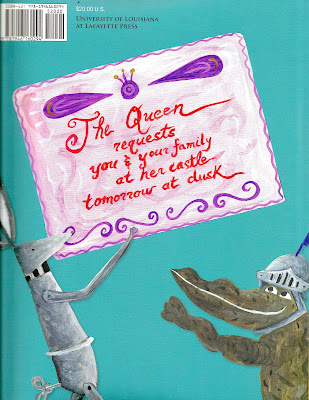 |
Couhig at work at The Conundrum |
On a chilly Thanksgiving evening following turkey and too much food, we traveled to St. Francisville in search of an independent bookstore owned by Missy Couhig whom we had met when she represented the works of authors performing in a reading at the Festival of Words in Grand Coteau, Louisiana.
The bookstore’s name, “The Conundrum,” remains a conundrum in the sense that the reason for naming this bookstore after a riddle patrons can’t figure out isn’t apparent to me. However, I did figure out, rather quickly, that I’d met a master marketer of books. Couhig, who’ll travel anywhere to sell books and meet new authors, says the word “market” isn’t really consonant with her mission. “The mission is about sharing,” she says of her profession.
As director of three literary festivals, she touts authors in every discipline — fiction, poetry, children’s literature through three major events: The Walker Percy Weekend; Writers and Readers Symposium; and The Children’s Book Festival — all based in St. Francisville, Louisiana.
“Bookstores are comfortable places,” she said. “If I see a bookstore, anywhere in the world, I’m going to enter it." She’s an esoteric reader, and it’s evident she’s fascinated with the idea of meeting writers “in person.”
Couhig retired from a position as executive manager of a pharmaceutical company, a job she had held for fifteen years before her husband, an attorney in New Orleans, came home one day and told her he had signed a lease on the building now housing The Conundrum (without her knowledge) in St. Francisville, Louisiana. He surprised her with the opportunity to pursue a profession as bookstore owner and manager — work for which she immediately showed a natural aptitude — and passion.
Although Couhig first majored in English at LSUNO (Louisiana State University in New Orleans), she received a degree in General Studies because she says she didn’t want to spend five semesters in French classes required in the English curriculum. “I love to read but have no desire to write,” she added.
Couhig arrived in St. Francisville on the heels of Hurricane Katrina when her husband, concerned about the safety of property belonging to his family, ended up buying a house in this small community of 1700 people. St. Francisville sits atop a ridge overlooking the Mississippi River and at one time provided the largest Mississippi River port between New Orleans and Memphis, Tennessee. Since the advent of the 21st century, the town has become a popular tourist destination for those who enjoy historic homes and southern culture.
Couhig’s maiden name, Aleman, denotes German descent, and her great grandfather settled in Napoleonville, Louisiana on a Spanish land grant. She spends half her time in New Orleans where she and her husband have one home and the other half in St. Francisville where they own another -- that is, when she isn’t on the road, searching for new authors and bookstores.
 |
Couhig displaying Native Flora Louisiana: Watercolor Drawings by Margaret Stones |
While talking with us, Couhig was busy inventorying shelves, opening shipments of books, serving other customers — doing some serious multi-tasking. And we could see why she wants to expand The Conundrum as she needs more space to house her plans for selling a wide range of new and used books, scheduling readings, directing festivals... and promoting books and authors she loves.
Photographs by Victoria Sullivan


























